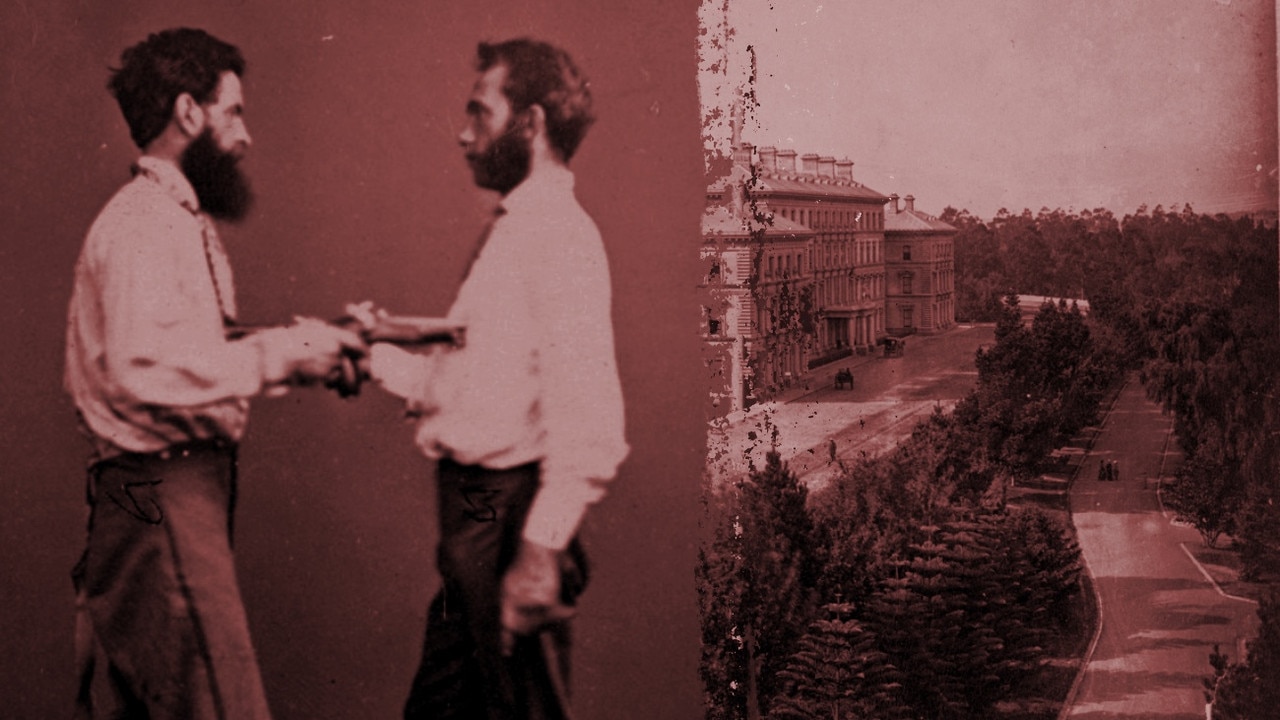What once stood on the site of Federation Square
LOVE it or hate it, Federation Square has changed the face of Melbourne. But do you know what once stood on this corner block before it bloomed into our iconic square?

FEDERATION Square has become a place where Melburnians congregate — eating, singing and protesting as the city bustles around them.
It’s hosted Oprah Winfrey and music festivals, been visited by the Queen — and even been the site of numerous protests and a riot in its short but incredibly vibrant history.
The architecture was polarising when it was first built and in 2009 Virtual Tourist awarded Federation Square with the title of the ‘World’s Fifth-Ugliest Building’.
But it’s grown on Melbourne, with its modern, earthy stone paving and jagged buildings — and its fortunes turned around by 2005 when it was included on The Atlantic Cities’ 2011 list of “10 Great Central Plazas and Squares”.
SITES THAT SHAPED MELBOURNE’S HISTORY
It now seems to fit seamlessly next to St Paul’s Cathedral and Flinders Street Station without diminishing their beauty or grandeur.
It’s such a prominent fixture that it’s hard to imagine what was there before — but would you believe the site has been a morgue, a fish market, a train station and corporate offices?
Take a look at the block of land that spawned Melbourne’s iconic Federation Square.

Fed Square, as it’s affectionately known, was only opened in 2002 but the land on which it sits has been part of Melbourne in one way or another since the city’s earliest days.
Melbourne’s first morgue was built on the site in 1871 as the city grappled with an influx dead bodies when the population surged during the gold rush.
Prior to this, bodies were laid out in government buildings or public rooms while people made funeral arrangements, and pretty soon the new city realised this wasn’t terribly hygienic.
So the government went about constructing a morgue, but Melburnians weren’t terribly happy have the dead so close to the city so it was relocated 12 years later.
MELBOURNE’S DOCKLANDS — INDUSTRIAL WASTELAND TO NEW SUBURB

The morgue building remained unused on the site until 1890, when it was eventually demolished.
Between 1865-1892, the open air Melbourne Fish Market occupied the corner but it was moved to a beautiful gothic building on the Spencer Street corner — which itself was sadly demolished to make way for a carpark before the 1956 Olympic Games.

The site has also been one of the city’s earliest transport hubs with Princes Bridge Railway Station built there in 1859 next to the morgue, and it was expanded in the in the 1880s.
Princes Bridge Station was the city terminal for all eastbound trains, and by 1910, it was connected to Flinders Street Station by an underground tunnel.
MELBOURNE’S PHANTOM RAILWAY LINES






The next major redevelopment on the site kicked off in the 1960s, when the government put plans into action to modernise the site and free up land in the CBD, which was becoming increasingly congested.
Princes Street Station was demolished and the station was moved underground with plans drawn up for a public square, shops and office towers.

The Gas and Fuel Corporation of Victoria office towers were opened in 1967 — and they were immediately derided and criticised as ugly and imposing, both overshadowing St Paul’s Cathedral and blocking the view of the Yarra River and the gardens.





The concrete square was windy and uninviting and didn’t attract as many people as was hoped — although the shops underneath were fairly popular with commuters picking up last minute goods before jumping on the train.


The arcade was also home to Central Station Records which became Melbourne’s music hub, often hosting bands and music groups at the tiny store.
By 1980, Princes Bridge Station was fully incorporated into Flinders Street Station with platforms 14, 15 and 16 becoming part of the main station.
But the corner site then remained relatively untouched until the 90s.

In 1996, Liberal Premier Jeff Kennett announced a major redevelopment of the area, which included demolishing everything on site and rebuilding it from the ground up.
He said the office towers were “a dreadful eyesore and a blot on the city” that were “featureless and upset the ambience”.

He proposed a cultural centre, cutting edge office suites, shops and a public space that could be used for a variety of events — but most notably, he said he wanted to cover the train tracks, from the corner of Swanston Street back to Russell Street, to allow easier access between the city and the Yarra.


An architectural design competition was announced in 1997 that received 177 entries from around the world — with the contract awarded to a consortium of that included London’s Lab Architecture Studio.
With a price tag of $450 million, the project required significant state and federal funding to get it off the ground — and it was hoped it would be completed in time for the centennial of federation on January 1, 2001.
But like most major construction jobs, there were delays and the square wasn’t unveiled until October 2002.








